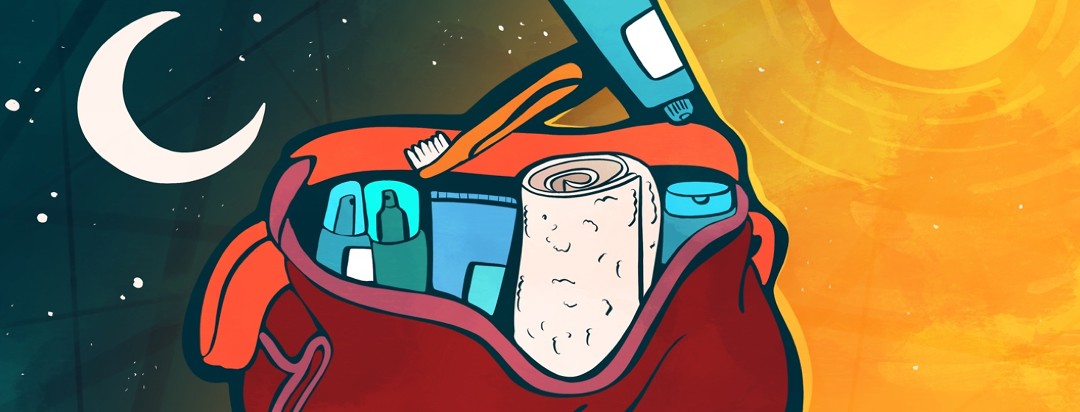Pack Your Bags! Preparing for an Overnight Sleep Study and MSLT
Let's talk about preparing you on what to expect and what to bring for a test that helps diagnose narcolepsy!
As a guy, this is perhaps a bit embarrassing to admit, but I think I am an over-packer. I wouldn’t be surprised if a few of the readers are as well. I think at the core of overpacking and even underpacking is a lack of knowledge.
Through the years, it’s interesting to see what each individual deems necessary for an overnight trip to a sleep lab. Please don’t accuse me of stereotyping, but generally, it does seem as if women pack more than men...way more! But it’s understandable since the individuals don’t actually know what’s necessary for a sleep study. Maybe the men weren’t paying attention in Boy Scouts when they said be prepared for anything!
What is narcolepsy?
Perhaps it would be helpful to understand narcolepsy. Narcolepsy is defined by the Mayo Clinic as “a chronic sleep disorder characterized by overwhelming daytime drowsiness and sudden attacks of sleep.”1
Overnight sleep study and the MSLT
What’s involved in a test that diagnoses narcolepsy? The multiple sleep latency test (MSLT) is a pain-free test that includes 5 naps...in my opinion, that has to be a medical procedure that’s available! But before the MSLT, which is the test that diagnoses narcolepsy, an overnight sleep test is conducted for primarily 2 reasons.
The first includes ruling out sleep apnea, although narcolepsy and sleep apnea symptoms aren’t a perfect match, they are similar. If the person does have sleep apnea (depending on the severity) they will likely be sent home and placed on a continuous positive airway pressure (CPAP) machine.
The second reason is to make sure the patient sleeps at least 6 hours to avoid a false positive. If a patient, for example, only slept for a couple of hours the night before the MSLT, naturally they would be more sleepy. So the patient would fall asleep quicker during the nap and perhaps because of the sleep deprivation, the patient would go into REM sleep much quickly than normal. That could provide information to the doctor that’s inaccurate and make them diagnose the patient with a false positive.
What to bring to a sleep test
The overnight sleep study/MSLT combined could have a patient at the sleep lab for 21 to 22 hours in total. This begs the question, “What should I bring?”
First off, I would encourage you to bring items you can’t sleep without. For example, a pillow, a special blanket, or your favorite PJs! Please bring toiletries items. Examples include deodorant, fresh contacts and solution, and glasses. Definitely eat supper before you come, some sleep labs provide snacks, but not necessarily a meal.
Now once the nighttime portion of the test is completed and the daytime portion of the test is in session, the sleep lab will provide breakfast and lunch. The test should be over by suppertime. The naps are done every 2 hours. The naps last anywhere between 15 to 35 minutes which leaves you with significant downtime. The room should have TV, but I would also encourage you to bring your phone, iPad, homework (if you're a student), and even books to read. Whatever keeps you entertained!
How was your experience?
We would love to hear from you! Has anyone been through one of these tests? If so, is there something I missed? If anyone has feedback or questions, please feel free to comment!

Join the conversation